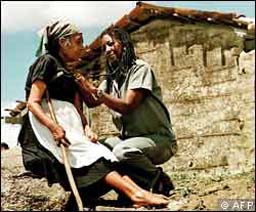Cuba’s medical diplomacy
- Submitted by: admin
- Health and Medicine
- 05 / 15 / 2010

When word reached Juan Carrizo that Hurricane Katrina had struck New Orleans on August 29 2005, he reacted with military precision.
From his office in a former Cuban naval base just west of Havana, while Washington um-ed and ah-ed over its own response, he began mobilising specialists to assist the thousands of Americans affected by the disaster.
Cuba itself had been scarred by Katrina, but Carrizo’s focus at the former Granma Naval Academy – a concrete campus on a balmy, palm-lined beach – was the other side of the Gulf of Mexico, as he helped to co-ordinate an unprecedented humanitarian mission to his country’s giant neighbour and arch political rival.
Within three days, Carrizo, dean of the Latin American Medical School (Elam), had assembled 1,100 doctors, nurses and technicians, and 24 tonnes of medicine, all ready to fly to Louisiana. They were dubbed the Henry Reeve Contingent, in honour of a New York-born Cuban hero who fought against the Spanish in the 19th century.
Cuba: Anatomy students at Elam, the medical school set up after hurricanes Georges and Mitch devastated the Caribbean in 1998 Fidel Castro, still president of Cuba at the time, said in a speech he made later that month: “Our country was closest to the area hit by the hurricane and was in the position to send over human and material aid in a matter of hours. It was as if a big American cruise ship with thousands of passengers aboard were sinking in waters close to our coast. We could not remain indifferent.”
But the US didn’t respond to the offer of assistance. It didn’t even acknowledge it. “We prepared more than 1,500 doctors with all the necessary knowledge, equipment and supplies, who were ready to start work as soon as we entered the country,” recalls Carrizo, shaking his head. “The US government didn’t accept them, and many people died who could have been saved.
That was a sad day for medicine, and for American society.”
Since 1998, when Hurricanes Georges and Mitch devastated the Caribbean and Castro resolved to train one doctor for every person killed by the storms, Carrizo had been set to work establishing Elam, the Latin American Medical School. It has since
trained more than 33,000 students from 76 countries, who then return home to practise, largely among poor patients.
This year, for the first time, some of its foreign graduates formally joined Cuban medical specialists on Henry Reeve Brigade missions to Haiti and Chile, following the most recent earthquakes.
Such “medical diplomacy” has been part of Cuba’s foreign policy almost since the revolution – and has grown in intensity over the past few years, fuelled above all by strong demand from Venezuela.
In some of the most remote and neglected parts of the world, where western countries have “brain drained” away most of the medical expertise, Cuban personnel are winning friends while helping to fill a desperate need. In the past half century, some 130,000 have worked abroad, and today, 37,000 – half of them doctors, the rest nurses and other specialists – are spread across more than 70 countries.
Now Elam is training many more from these nations too.
By Andrew Jack
Source: The Financial Times
Comments